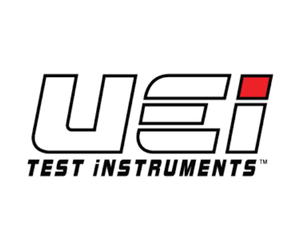Get Tech Tips
Subscribe to free tech tips.
Silicon Carbide vs. Silicon Nitride Hot Surface Ignitors (HSIs)
The ignitor of a furnace (or a gas pool heater or other gas-fired appliance) is the heat source, and it can come in one of four varieties: standing pilot, direct spark (DS), intermittent spark (ISI), and hot surface (HSI). We have a tech tip explaining each of these ignitor types in detail, but we’re going to focus on the HSI for now.
A hot surface igniter (HSI) is usually powered by 120V power in most furnaces. Unlike other methods, which use a pilot flame and/or spark to light the burner, an HSI has a metal piece that heats up. That metal piece can be made of silicon carbide or silicon nitride. Each type has slightly different properties.
Silicon Carbide
Silicon carbide (SiC) ignitors are more common in older furnaces. These have rough-looking, speckled surfaces and are often flat, though they may come in a spiral variety as well. Silicon carbide ignitors have great thermal conductivity. However, they have one key drawback: they’re very brittle.

Silicon carbide ignitors can break while being handled (such as during installation) or in the combustion chamber after many uses. Because they are so brittle, it’s not the best idea to remove an ignitor for a visual inspection if your diagnostics point to a possible ignitor failure. Instead, you can check resistance by connecting your meter leads to the plugs. An OL reading indicates that there is a crack, and the ignitor will need to be replaced. A high resistance can also indicate that a silicon carbide ignitor is on its last leg, particularly if it exceeds the manufacturer’s rated ohms (often ~90 ohms) and especially if your meter auto-ranges to the kilohm scale when it picks up a reading.
Most of the time, you can find an OEM replacement. However, you may be able to upgrade the ignitor to a silicon nitride one.
Silicon Nitride
On the other hand, silicon nitride (Si3N4) is a much more durable material. These ignitors typically look like round rods or flat strips of metal with a smoother surface than their silicon carbide cousins.

Source: White-Rodgers by Copeland
Silicon nitride ignitors are more common in newer gas furnaces because they heat up more quickly than silicon carbide igniters, use less energy, and last longer; they hold less heat and don’t wear out as quickly as a result. (You can see the differences in action if you measure the resistance of a working silicon nitride ignitor and compare it to a working silicon carbide ignitor; the former will have lower resistance.)
Silicon nitride is also the choice material for universal hot surface ignitor replacements because of its durability. The White-Rodgers HotRod is one such example. The HotRod is a 120V hot surface ignitor that can replace over 170 part numbers (HotRod EX replaces up to 275 part numbers), including silicon carbide ignitors.
Silicon Nitride Upgrade Considerations
If the voltage matches, it almost seems like a no-brainer to upgrade a failed silicon carbide ignitor with a silicon nitride one. While it’s not necessarily a difficult upgrade to make if you follow the installation manual, you have to be careful.
The most important design factor of a hot surface ignitor in terms of functionality is its surface area. It’s important because the surface transmits heat to the incoming gas on contact; the furnace won’t ignite if there’s not enough heat in contact with the gas. Silicon carbide ignitors tend to have a larger surface area than silicon nitride ones, so you have to mount the silicon nitride ones carefully and in a position where they will make sufficient contact with the gas coming out of the burner.
Universal ignitors often come with a universal adapter bracket and/or OEM brackets to help you mount the new ignitor to resemble the old one as much as possible. For that reason, you’ll want to make sure you can either keep the fittings as they are when you remove the existing ignitor or take pictures of them for reference. The White-Rodgers HotRod installation also has diagrams showing how to adapt the new silicon nitride ignitor to a few different OEM silicon carbide ignitor setups. Both the flat surfaces and coils are represented in the literature:

Source: HotRod 21D64-2 Universal Hot Surface Ignitor Installation Instructions, pg. 15

Source: HotRod 21D64-2 Universal Hot Surface Ignitor Installation Instructions, pg. 19
Final Considerations for Upgrades and Service
Overall, the silicon nitride ignitor is superior in terms of durability and longevity, and an upgrade from silicon carbide to silicon nitride could be a high-value item for your customers. However, that won’t mean anything if it isn’t mounted properly. Sometimes, silicon carbide ignitors may just need to be replaced with the same OEM part number to ensure that the gas can fully envelop the ignitor and light the burner.
If you want to learn more about hot surface ignitors, Craig Migliaccio (AC Service Tech) has a great video highlighting the differences between the types and showing how to take resistance measurements to diagnose them.











Comments
To leave a comment, you need to log in.
Log In